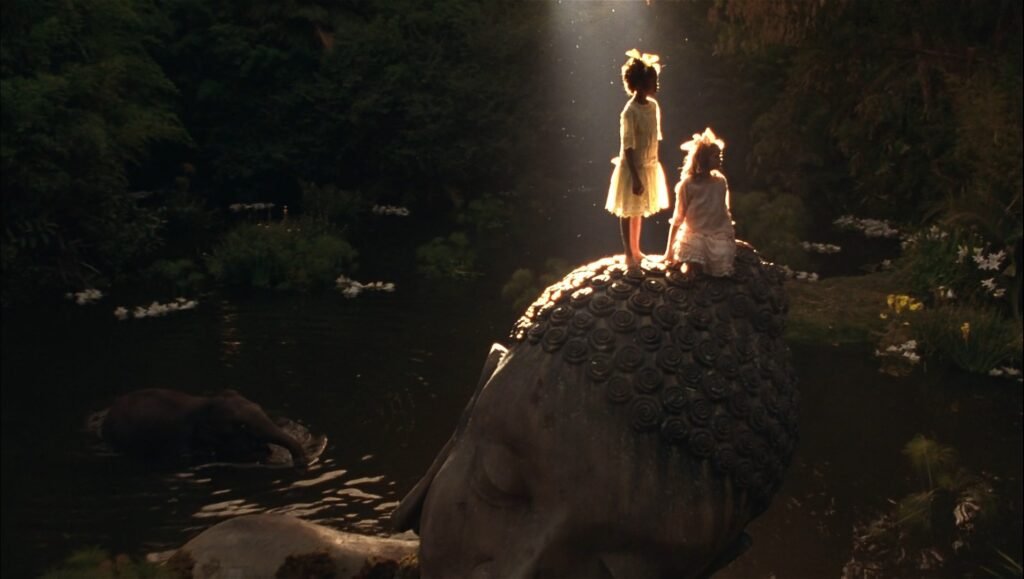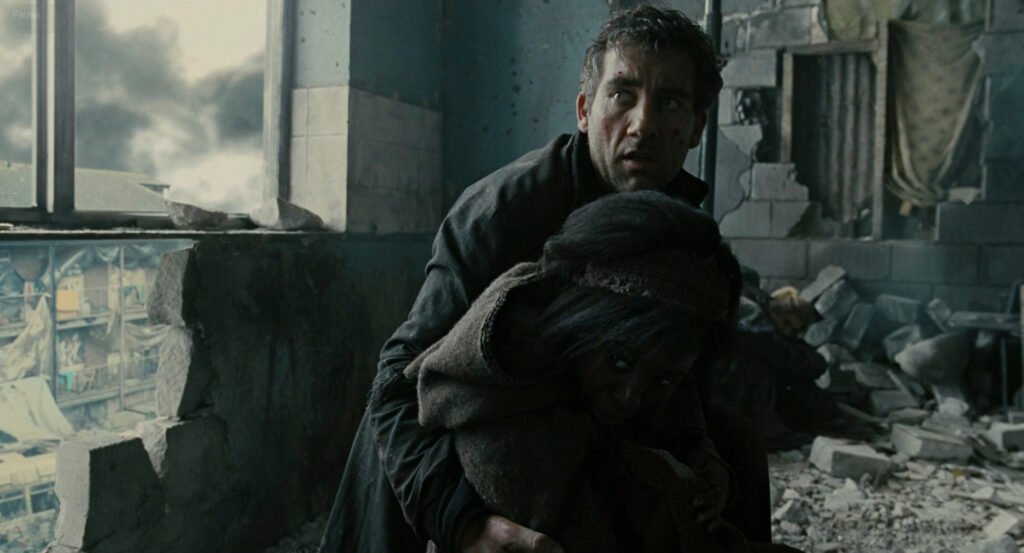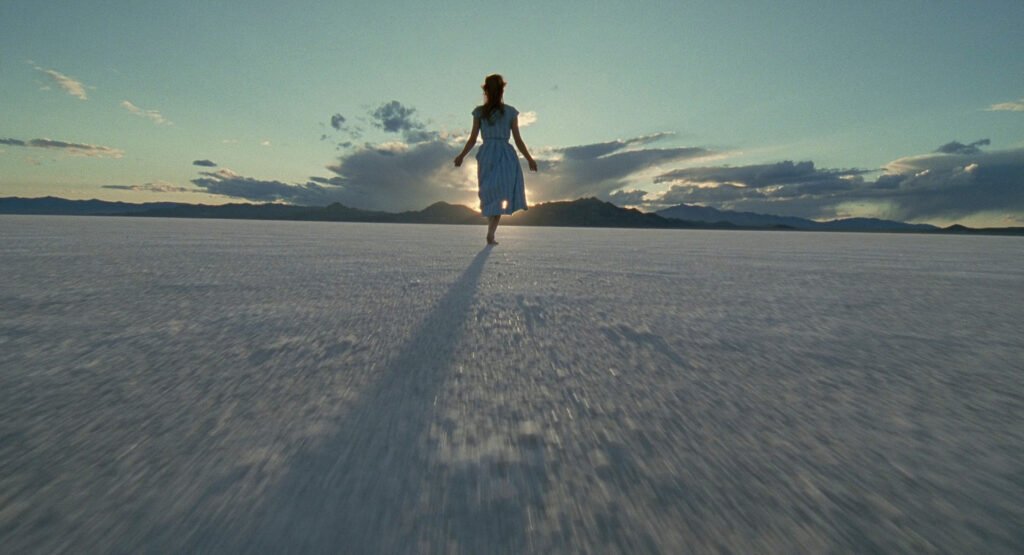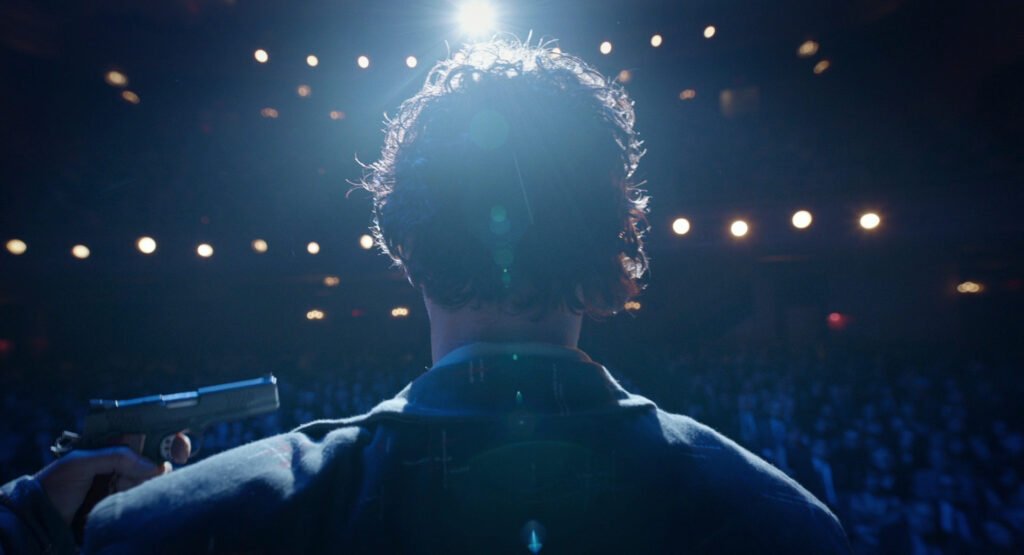Emmanuel Lubezki Cinematography: Painting with Light and Emotion Few names evoke the same level of reverence and admiration as Emmanuel Lubezki. Known affectionately as “Chivo” (Spanish for “GOAT”), this Mexican cinematographer has left an permanent mark on the world of Cinematography, redefining the very art of visual storytelling.
With a career spanning over three decades, Lubezki has established himself as a master of his craft, renowned for his unparalleled ability to capture the essence of a story through the lens. His work, characterized by a poetic use of natural light, fluid and immersive camera movement, and an unwavering commitment to emotional truth, has earned him a place among the great Cinematographers, alongside legends like Vittorio Storaro, Gordon Willis, Conrad Hall and Roger Deakins.
To illuminate the artistry and genius of Emmanuel Lubezki, exploring the various facets of his signature style, his collaborations with some of the most visionary directors of our time, and the enduring impact of his work on contemporary cinema. This analysis of his techniques, his creative process, and his most iconic films, we will attempt to unveil the secrets behind Lubezki’s unparalleled ability to paint with light and emotion, to capture the ineffable beauty and complexity of the human experience on film.

Table of Contents
The Early Years: From Mexico City to Hollywood
Emmanuel Lubezki’s journey began in Mexico City, where he was born on November 30, 1964. Growing up in a family steeped in the arts – his father, Muni Lubezki, was a well-known actor and producer, while his mother, Graciela Morgenstern, was a talented dancer – young Emmanuel was exposed to the power of storytelling from a very early age. His love for cinema was further nurtured by his studies at the Centro Universitario de Estudios Cinematográficos (CUEC) in Mexico City, one of the most prestigious film schools in Latin America, where he honed his craft and developed a keen eye for visual composition, lighting, and camera movement.
Lubezki’s early work in Mexican cinema, particularly his collaborations with fellow CUEC alum Alfonso Cuarón, laid the groundwork for the distinctive visual style that would become his hallmark. Their first film together, “Sólo con Tu Pareja” (1991), a satirical romantic comedy, already showcased Lubezki’s penchant for fluid, dynamic camerawork and his ability to create a sense of intimacy and emotional resonance through his framing and lighting.
Their second collaboration, the Hollywood-produced “A Little Princess” (1995), that truly announced Lubezki’s arrival on the international stage. The film, a lush and dreamlike adaptation of Frances Hodgson Burnett’s classic novel, was a visual feast, with Lubezki’s camera capturing the magic and wonder of childhood with a sense of poeticism and grace that belied his relative inexperience in the industry.

From there, Lubezki’s career took off, as he began to collaborate with some of the most acclaimed directors of his generation, both in Mexico and in Hollywood. His work with Tim Burton on “Sleepy Hollow” (1999), a gothic horror-mystery with a distinctively stylized visual aesthetic, cemented his reputation as a cinematographer of rare talent and versatility.
His ongoing partnership with Terrence Malick, which began with the lyrical and impressionistic “The New World” (2005) and has continued through films like “The Tree of Life” (2011) and “Knight of Cups” (2015), has produced some of the most beautiful and emotionally resonant images in contemporary cinema, with Lubezki’s camera capturing the ephemeral beauty of nature and the depths of the human soul with equal grace and sensitivity.
The Signature Style of Emmanuel Lubezki Cinematography: Naturalism, Fluidity, and Emotion
At the heart of Emmanuel Lubezki’s cinematography lies a deep commitment to naturalism, to capturing the truth of a moment or a character through the lens. Unlike many of his contemporaries, who rely heavily on artificial lighting and elaborate setups to create a desired effect, Lubezki is known for his masterful use of natural light, often eschewing studio lighting altogether in favor of the sun, the moon, or practical sources like windows and lamps. This approach, which he has honed over decades of experimentation and refinement, allows him to create images that feel organic and alive, suffused with a sense of raw, unfiltered emotion.
One of the key techniques that Lubezki employs to achieve this naturalistic effect is his use of wide-angle lenses, often paired with a Steadicam or handheld camera. By shooting with a wide lens, Lubezki is able to capture more of the environment around his subjects, creating a sense of context and spatial relationship that draws the viewer deeper into the world of the film. At the same time, the fluidity and mobility of his camera, whether gliding smoothly on a Steadicam or shaking with the handheld urgency of a documentary, creates a sense of immediacy and intimacy, as if we are right there in the moment with the characters, experiencing their joys, their sorrows, and their struggles alongside them.
This sense of intimacy is further enhanced by Lubezki’s use of long, uninterrupted takes, a technique that has become one of his most recognizable signatures. By allowing scenes to play out in real time, without the interruption of cuts or edits, Lubezki creates a sense of unbroken reality, a window into the lives of his characters that feels raw and unmediated. This approach requires a great deal of technical skill and planning, as well as a deep trust and collaboration between Lubezki and his directors and actors, but the result is a kind of cinematic magic that is impossible to achieve through more conventional means.
Another key aspect of Lubezki’s signature style is his use of color and contrast to create a sense of emotion and atmosphere. Whether he is working with the rich, saturated hues of a period piece like “A Little Princess” or the stark, desaturated palette of a dystopian thriller like “Children of Men” (2006), Lubezki’s use of color is always purposeful and expressive, designed to evoke a specific mood or feeling in the viewer. Similarly, his use of contrast, whether through the play of light and shadow or the juxtaposition of different textures and patterns, creates a sense of depth and dimensionality that makes his images feel tactile and alive.

Collaborations with Visionary Directors: Cuarón, Malick, Iñárritu, and Beyond
One of the defining features of Emmanuel Lubezki’s career has been his collaborations with some of the most visionary and innovative directors of his generation. These partnerships, built on a foundation of mutual trust, respect, and creative synergy, have produced some of the most groundbreaking and influential films of the past three decades, pushing the boundaries of what is possible with cinematography and redefining the language of visual storytelling.
Perhaps the most significant of these collaborations has been Lubezki’s ongoing partnership with fellow Mexican filmmaker Alfonso Cuarón. The two first met as students at CUEC in the 1980s and have since worked together on six features, each one a landmark in its own right. From the dreamlike beauty of “A Little Princess” to the dystopian grit of “Children of Men,” from the epic sweep of “Harry Potter and the Prisoner of Azkaban” (2004) to the groundbreaking technical wizardry of “Gravity” (2013), Lubezki and Cuarón have consistently pushed each other to new heights of creativity and innovation, forging a cinematic language that is at once deeply personal and universally resonant.

Equally significant has been Lubezki’s work with American auteur Terrence Malick, a director known for his poetic, impressionistic approach to storytelling and his almost spiritual reverence for the natural world. Beginning with “The New World” in 2005, Lubezki has shot all of Malick’s subsequent films, including “The Tree of Life,” “To the Wonder” (2012), “Knight of Cups,” and “Song to Song” (2017). These collaborations have produced some of the most beautiful and emotionally profound images in contemporary cinema, with Lubezki’s camera capturing the ephemeral beauty of nature and the inner lives of Malick’s characters with a sense of grace and transcendence that is truly breathtaking.

In recent years, Lubezki has also formed a close creative partnership with Mexican director Alejandro González Iñárritu, with whom he has made three films: “Birdman or (The Unexpected Virtue of Ignorance)” (2014), “The Revenant” (2015), and the virtual reality installation “Carne y Arena” (2017). These collaborations have been some of the most audacious and technically ambitious of Lubezki’s career, pushing the boundaries of what is possible with long takes, natural lighting, and digital technology.
“Birdman,” in particular, is a tour de force of cinematography, shot to appear as one continuous take that weaves in and out of the labyrinthine backstage world of a Broadway theater, while “The Revenant” is a masterclass in using natural light and handheld camerawork to create a sense of raw, visceral intensity.

Beyond these key collaborations, Lubezki has worked with a wide range of other notable directors throughout his career, each one bringing their own unique sensibility and vision to the table. From Tim Burton’s gothic whimsy in “Sleepy Hollow” to Michael Mann’s sleek, nocturnal neo-noir in “Ali” (2001), from the Coen Brothers’ darkly comic absurdism in “Burn After Reading” (2008) to Spike Jonze’s surreal, dystopian romance in “Her” (2013), Lubezki has proven himself to be a cinematographer of extraordinary versatility and adaptability, able to seamlessly integrate his own style and approach into the distinctive worlds of each filmmaker he works with.
The Technical Innovations of Emmanuel Lubezki: Pioneering Virtual Cinematography
In addition to his mastery of traditional cinematographic techniques, Emmanuel Lubezki has also been at the forefront of the digital revolution, pioneering new technologies and approaches that have expanded the boundaries of what is possible with the medium. Perhaps the most significant of these innovations has been his work in the field of virtual cinematography, a technique that combines live-action footage with computer-generated imagery (CGI) to create seamless, photorealistic environments that would be impossible to capture through traditional means.
Lubezki first experimented with virtual cinematography on the 2006 film “Children of Men,” using CGI to create the film’s dystopian world and seamlessly blending it with the live-action footage of the actors. But it was his work on “Gravity” that truly pushed the boundaries of the technology, creating a fully immersive space environment that felt entirely real and tangible, even though much of it was created digitally. To achieve this effect, Lubezki and his team developed a new system called the Lightstage, which used a series of high-resolution cameras to capture the actors’ performances in a 360-degree environment, allowing them to be seamlessly integrated into the CGI world of the film.
This groundbreaking work has had a profound impact on the film industry, paving the way for a new era of virtual production in which the lines between live-action and CGI are increasingly blurred. Lubezki’s pioneering use of virtual cinematography has been adopted by filmmakers around the world, from James Cameron’s “Avatar” (2009) to the Marvel Cinematic Universe, and has opened up new possibilities for storytelling and visual expression that were once thought impossible.
But virtual cinematography is just one example of Lubezki’s technical innovations. Throughout his career, he has consistently pushed the boundaries of what is possible with camera technology, experimenting with new lenses, cameras, and post-production techniques to create images that are at once stunningly beautiful and emotionally resonant. Whether he is using a custom-built rig to capture the weightless movements of astronauts in “Gravity” or a handheld Arri Alexa to capture the raw intensity of a bear attack in “The Revenant,” Lubezki’s technical mastery is always in service of the story and the characters, creating a seamless and immersive experience for the viewer.
The Emotional Resonance of Lubezki’s Cinematography: Finding the Truth in the Image
At the heart of Emmanuel Lubezki’s cinematography, beyond his technical innovations and visual style, lies a deep commitment to emotional truth, to capturing the essence of a character or a moment through the lens of his camera. For Lubezki, cinematography is not just about creating pretty pictures or showcasing technical virtuosity; it is about finding the truth in the image, the raw, unvarnished reality of human experience in all its messy, complicated glory.
This commitment to emotional truth is evident in every frame of Lubezki’s work, from the tender, intimate moments of “Y Tu Mamá También” (2001) to the epic, existential musings of “The Tree of Life.” Whether he is capturing the quiet desperation of a middle-aged man in crisis in “Birdman” or the primal, animalistic struggle for survival in “The Revenant,” Lubezki’s camera always seeks out the human element, the flicker of emotion in an actor’s eyes or the subtle shift in body language that speaks volumes about their inner life.
To achieve this level of emotional resonance, Lubezki works closely with his directors and actors, fostering a sense of trust and collaboration that allows them to fully inhabit their characters and bring their stories to life. He is known for his patience and persistence on set, often shooting dozens of takes until he captures just the right moment, the perfect confluence of performance, lighting, and camera movement that will convey the desired emotion or theme.
But Lubezki’s commitment to emotional truth goes beyond just his work. He is also deeply attuned to the emotional resonance of the natural world, the way that light, color, and texture can evoke a sense of mood or atmosphere that is essential to the story being told. Whether he is capturing the golden hour glow of magic hour in “The Tree of Life” or the stark, unforgiving landscapes of “The Revenant,” Lubezki’s camera always seeks out the beauty and meaning in the world around us, creating images that are at once visually stunning and emotionally profound.
The Legacy of Emmanuel Lubezki: Inspiring a New Generation of Filmmakers
As one of the most influential and respected cinematographers of his generation, Emmanuel Lubezki’s impact on the world of cinema cannot be overstated. His work has redefined the very language of visual storytelling, pushing the boundaries of what is possible with camera movement, composition, lighting, and emotion. Through his collaborations with some of the most visionary directors of our time, Lubezki has created a body of work that is both timeless and utterly contemporary, speaking to the deepest truths of the human experience with a sense of poetry and grace that is truly unparalleled.
Perhaps the most enduring legacy of Lubezki’s work is the way in which it has inspired and influenced a whole new generation of filmmakers and cinematographers. His techniques and approaches, from his use of natural lighting and wide-angle lenses to his mastery of long takes and virtual cinematography, have been studied and emulated by countless young artists around the world, each one seeking to capture some of the magic and emotional resonance that Lubezki brings to every frame.
But beyond just his technical innovations, Lubezki’s work has also inspired a new generation of filmmakers to think more deeply about the emotional and thematic resonance of their images, to use the language of cinema to explore the deepest truths of the human experience. From the poetic realism of Barry Jenkins’ “Moonlight” (2016) to the haunting, dreamlike imagery of David Lowery’s “A Ghost Story” (2017), the influence of Lubezki’s approach can be seen in some of the most exciting and innovative films of recent years.
As the film industry continues to evolve and change, with new technologies and platforms emerging every day, the legacy of Emmanuel Lubezki remains as vital and relevant as ever. His commitment to emotional truth, his mastery of visual storytelling, and his unwavering dedication to the art and craft of cinematography will continue to inspire and influence filmmakers for generations to come, reminding us of the power and beauty of the moving image to capture the essence of the human experience.
Conclusion
The way in which light, shadow, and movement can combine to create something truly transcendent. Through his lens, we are invited to see the world anew, to find beauty and meaning in the most unexpected of places, and to connect with the deepest truths of the human experience on a profound and visceral level.
Whether he is capturing the magic and wonder of childhood in “A Little Princess,” the existential yearning of the soul in “The Tree of Life,” or the raw, primal struggle for survival in “The Revenant,” Lubezki’s camera always seeks out the emotional core of the story, the beating heart that lies beneath the surface of the image. His work is a reminder that cinema, at its best, is not just a means of entertainment or escapism, but a powerful tool for understanding ourselves and the world around us, for grappling with the big questions of life, death, love, and meaning.
As we look to the future of cinema, it is clear that the influence and legacy of Emmanuel Lubezki will only continue to grow. His techniques and approaches, his commitment to naturalism and emotion, his pioneering use of virtual cinematography and other digital technologies
Emmanuel Lubezki Filmography
- Here is the list of titles and years from the provided filmography:
- The Devil’s Teeth (In Development)
- The Knowing Southern Right Whales (2023)
- Amsterdam (2022)
- Dior: Joy (2018)
- Carne y arena (2017)
- Song to Song (2017)
- Ryuichi Sakamoto: The Revenant Main Theme (Alva Noto Edit) (2016)
- The Revenant (2015)
- Knight of Cups (2015)
- Last Days in the Desert (2015)
- Birdman or (The Unexpected Virtue of Ignorance) (2014)
- Gravity (2013)
- To the Wonder (2012)
- The Tree of Life (2011)
- Write the Future (2010)
- Dick Tracy Special (2010)
- Burn After Reading (2008)
- To Each His Own Cinema (2007)
- Children of Men (2006)
- The New World (2005)
- A Series of Unfortunate Events (2004)
- The Assassination of Richard Nixon (2004)
- The Cat in the Hat (2003)
- De Mesmer, con amor o Té para dos (2002)
- Ali (2001)
- And Your Mother Too (2001)
- Things You Can Tell Just by Looking at Her (2000)
- Sleepy Hollow (1999)
- Meet Joe Black (1998)
- Great Expectations (1998)
- The Birdcage (1996)
- A Walk in the Clouds (1995)
- A Little Princess (1995)
- Ámbar (1994)
- Reality Bites (1994)
- The Harvest (1993)
- Fallen Angels (1993)
- Miroslava (1993)
- Twenty Bucks (1993)
- Like Water for Chocolate (1992)
- Love in the Time of Hysteria (1991)
- Bandidos (1991)
- Hora marcada (1989–1990)
- La muchacha (1990)
- El motel de la muerte (1990)
- Los buzos diamantistas (1988)
- Sera por eso que la quiero tanto (1985)
- Vengeance Is Mine (1983)
What are Emmanuel Lubezki’s most acclaimed cinematographic works?
Some of Emmanuel Lubezki’s most critically acclaimed cinematographic works include:
“Gravity” (2013)
“Birdman” (2014)
“The Revenant” (2015)
“Children of Men” (2006)
“The Tree of Life” (2011)
“Y Tu Mamá También” (2001)
“A Little Princess” (1995)
These films have earned Lubezki numerous accolades, including Academy Awards for Best Cinematography for “Gravity,” “Birdman,” and “The Revenant.”
How would you describe Emmanuel Lubezki’s cinematographic style?
Emmanuel Lubezki’s cinematographic style is characterized by:
Use of natural light: Lubezki often relies on natural light sources to create realistic and immersive visuals.
Fluid camera movement: He frequently employs long, uninterrupted takes and smooth camera movements to create a sense of continuity and realism.
Wide-angle lenses: Lubezki uses wide-angle lenses to capture more of the environment and create a sense of depth in his shots.
Emotionally resonant compositions: His framing and use of light are designed to evoke specific emotions and enhance the storytelling.
Collaboration with directors: Lubezki works closely with directors to develop a unique visual language for each film.
What unique approach did Emmanuel Lubezki take while filming “The Revenant”?
While filming “The Revenant,” Emmanuel Lubezki took a unique approach by:
Relying solely on natural light: Lubezki and director Alejandro González Iñárritu decided to shoot the film using only natural light sources, often filming during the “magic hour” just before sunset to capture the most stunning lighting conditions.
Using handheld cameras: To create a sense of immediacy and raw energy, Lubezki frequently used handheld cameras to follow the action closely.
Embracing challenging weather conditions: The crew faced harsh weather conditions, including snow and sub-zero temperatures, which Lubezki used to his advantage to create a visceral and immersive experience for the audience.
Who is considered the top cinematographer in the industry?
There are several highly respected cinematographers in the industry, and opinions may vary on who is considered the “top” cinematographer. However, some of the most renowned and influential cinematographers include:
Emmanuel Lubezki
Roger Deakins
Vittorio Storaro
Robert Richardson
Janusz Kamiński
Christopher Doyle
Greig Fraser
These cinematographers have consistently delivered visually stunning and innovative work, pushing the boundaries of the craft and inspiring future generations of filmmakers.